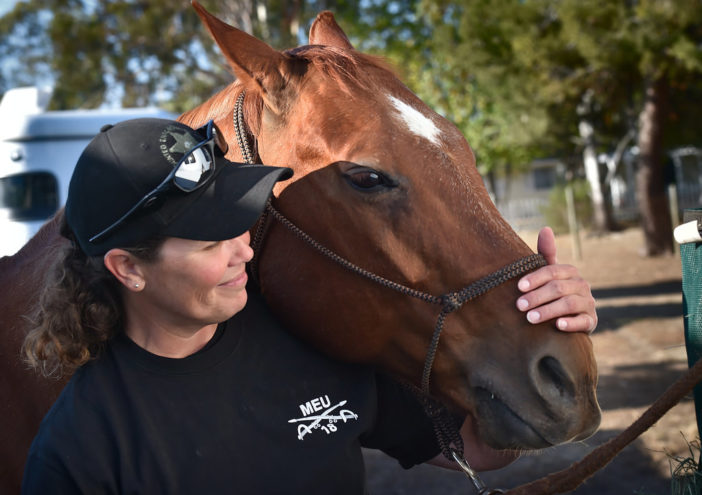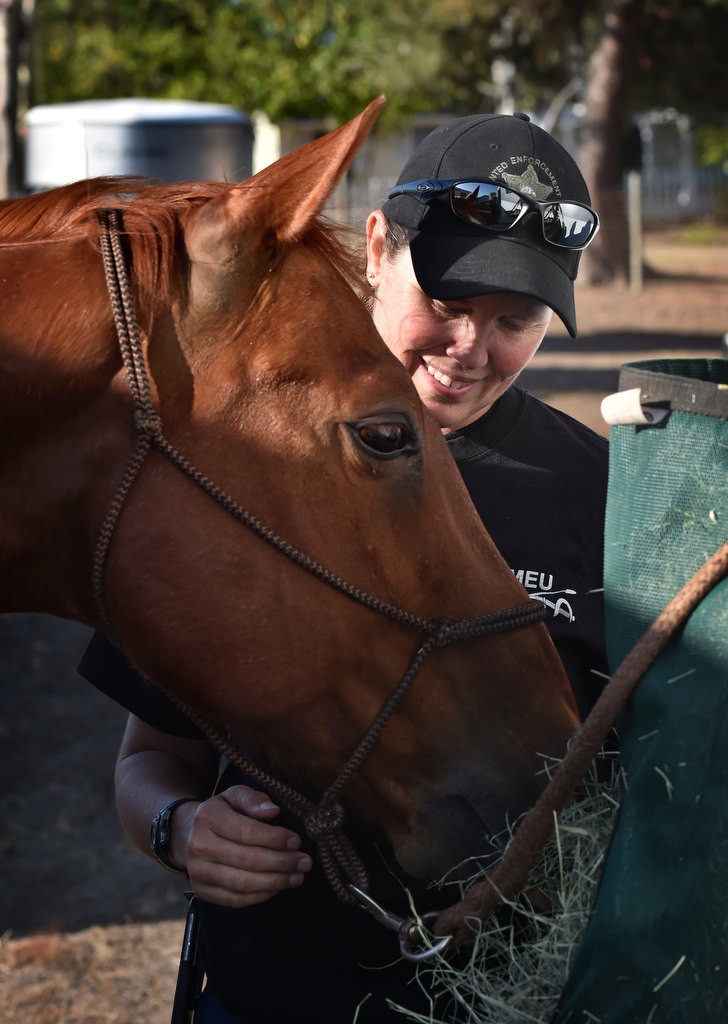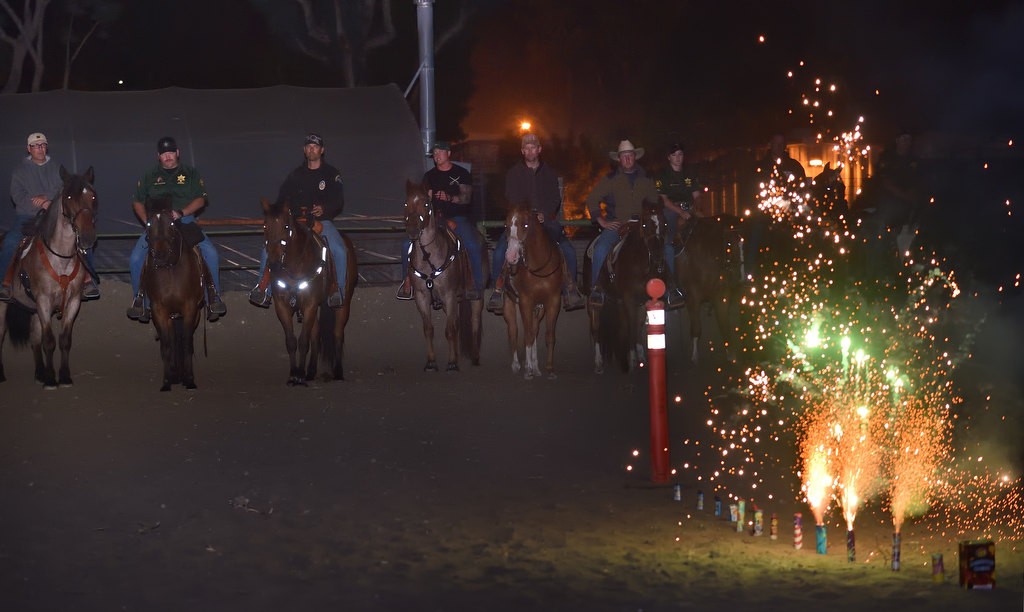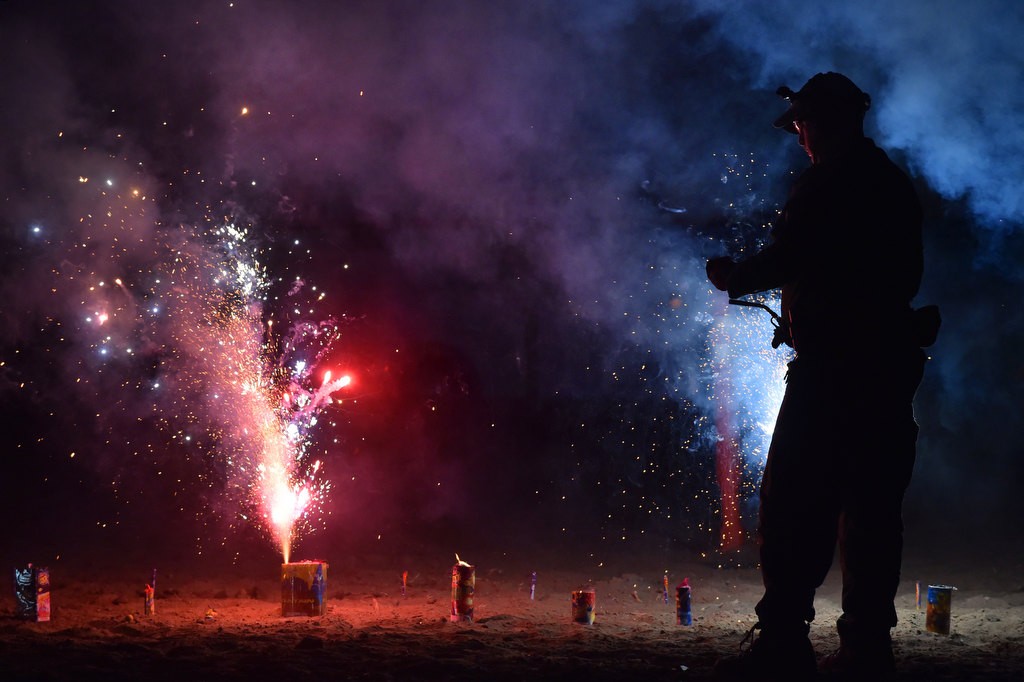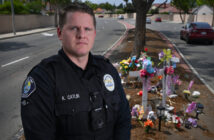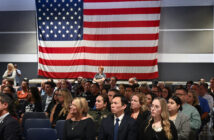The horses lined up against the far side of the arena patiently watching the light show in front of them: fireworks and firecrackers making sounds and bursting with light in a way that make most animals, especially flight animals like horses, run and hide in terror.
But not these horses, all members of the Orange County Regional Mounted Enforcement Unit, a team of Orange County officers, sergeants and deputies (from the Orange County Sheriff’s Department, Santa Ana, Anaheim, Garden Grove, Buena Park, Huntington Beach and Newport Beach Police Departments) and their horses that meets monthly for regular training and also works together for large-scale events, including political rallies like the recent Orange County Trump rallies, the annual San Juan Capistrano Swallows Day Parade and some large events at Angel Stadium of Anaheim, including baseball games, concerts and Supercross.
The fireworks and firecrackers on this particular Wednesday night were part of the OCSD’s annual Mounted Enforcement Unit Fourth of July training at “the farm,” located at the James A. Musick Facility in Irvine, which also houses one of five OCSD jails. The pyrotechnics were provided and fired off by OCSD Bomb Squad officers. They were illegal fireworks and firecrackers confiscated by law enforcement throughout the county that were to be detonated for safety reasons by the Bomb Squad. But they served another very important function on this night: to help prepare horses for the upcoming Fourth of July festivities.

Orange County Sheriff’s deputies from the Mounted Enforcement Unit run through training exercises including a simulated protest at the James A. Musick Facility in Irvine.
Photo by Steven Georges/Behind the Badge OC
“You’re asking them to do what they’re not wired to do,” says Sgt. Dee Dee Kurimay, OCSD Mounted Enforcement Unit supervisor.
Not all of the horses remained calm during the fireworks show. A few of the newer members, which stood outside of the arena at a safer distance from their perspective, anxiously moved back a bit and clearly wanted to get further away from the loud crackling sounds and bright lights. But generally, even the newbies stood their ground.
Earlier in the day, the horses also practiced crowd control training with a mock protest complete with live “actors” (members of the OCSD Explorers), signs (“Law Enforcement United”) and loud chanting (“Riot! Riot! Riot!”).
In groups, the horses moved the protesters back in various directions and also practiced “splitting the crowd” – a technique employed when there is a large mass of people and no way for officers to get through the crowd.

OCSD Sgt. Dee Dee Kurimay is supervisor of her agency’s Mounted Enforcement Unit.
Photo by Steven Georges/Behind the Badge OC
Crowd control is a large part of what the 16 horses in the OCSD Mounted Enforcement Unit do at events they may be called out to assist on. For instance, at the Trump rally at the Pacific Amphitheatre in Costa Mesa, the sheer number of people required a concerted effort by the assisting Mounted Enforcement Units to part crowds and move them back in order to keep the public safe.
“There was just a sea of people,” says Kurimay.
When the amphitheater was at capacity, there were still a couple thousand people standing outside the closed amphitheater gates. With 23,000 people total, this would become a major public safety issue once the gates opened.
Kurimay formed a squad of 12 horses supplemented with ground troops and put training into practice by systemically moving the throngs back away from the gate. The team moved together in a cohesive line, and if a straggler from the crowd attempted to get through, the ground troops were there to re-route the person.
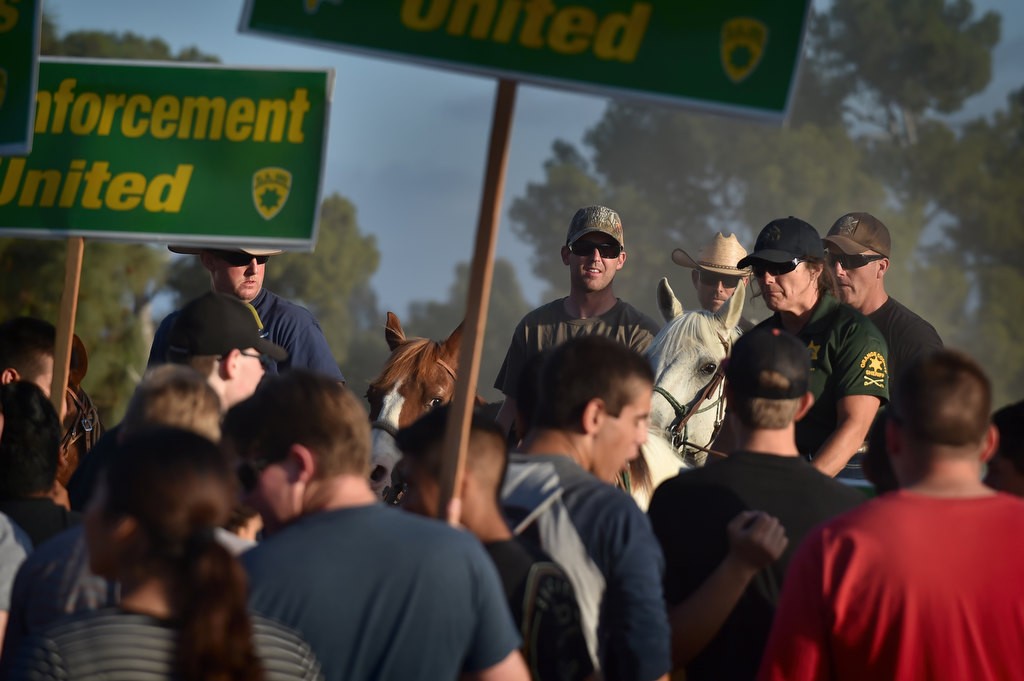
Police explorers hold picket signs and shout to simulate a protest in order to get the horses used to the sights and sounds of a real protest.
Photo by Steven Georges/Behind the Badge OC
“Nobody got hurt. Nobody got trampled. Nobody panicked,” says Kurimay. “These horses are very effective.”
People instinctively move back from a horse’s sheer size, but at the same time even an angry crowd can appreciate its magnificence (Kurimay recalled some “Oh, I like your horse” in between the screaming and yelling at the Trump rally).
“People will just move,” she says.
In addition to public events like the rallies and the upcoming Fourth of July festivals (the OCSD Mounted Enforcement Unit will be assisting where needed, including in Newport Beach, Huntington Beach and Dana Point), the sheriff’s department unit also does contract work for The Transportation Corridor Agencies and the Orange County Transportation Authority.
The unit is helping to turn some land back into natural habitat by keeping trespassers off and providing education. Last year, the OCSD MEU worked well over 200 assignments. Established in 1969, the unit has a proud history, and the group has grown much and evolved through the years.
The OCSD MEU also has a Color Guard, established in 1997, which has members of the unit riding in parades and in special events.
“The horses do a fantastic job,” says Kurimay.
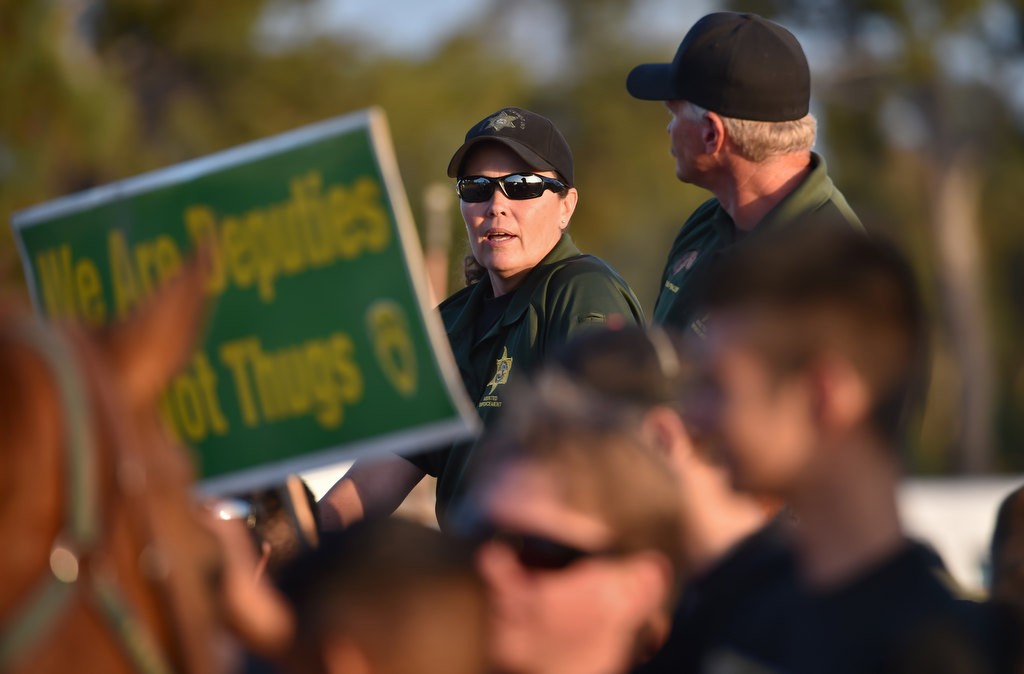
OCSD Sgt. Dee Dee Kurimay of the Mounted Enforcement Unit with Joe, her 16-year-old horse at a practice protest to get the horses used to the sights and loud noises of a real protest.
Photo by Steven Georges/Behind the Badge OC
They’ve also worked with San Juan Capistrano’s homeless encampments in the riverbed area as a way for the area’s officers to reach difficult-to-access spots. And they’ll also work regular patrol in areas when needed.
“Even the bad guys like the horses,” she says.
At the center of everything the Mounted Enforcement Unit does is the relationship between horse and rider. They’re more than just partners, they’re family.
“The relationship between horse and rider is essential to their success,” Kurimay says.
Though at one time many of the horses in the sheriff’s department’s Mounted Enforcement Unit were county-owned horses that lived at the farm, now horses are bought and cared for by each individual member and many of them live on his or her land in the backyard – as is the case with Kurimay and her horse, Joe. In fact, members of the OCSD MEU do this in addition to their full-time primary work assignments in other divisions (Kurimay is assigned to the Central Women’s Jail).
“Members personally incur the costs required for care and upkeep of the horses,” says Kurimay.
As far as Kurimay is concerned, she is Joe’s mom and if horses could talk, he would most likely agree – especially after being fed a bag of hay, which he frequently enjoyed throughout the training day during rest periods.
In addition to vet visits, the 20 or so pounds of hay Joe eats a day – as well as his joint supplements – Kurimay also makes sure Joe has all the equipment he needs for his various deployments, including a saddle pad, a sheriff’s breast collar with badge and saddlebags. These dedicated MEU members must provide their personally owned trucks, trailers and most of the equipment required for deployments.
The horses are well cared for and loved.
And that’s part of the training, too, because even when the horses are walking toward an “aggressive crowd” during training, once the exercise is over, the mock crowd gets to pet the horses so that the horses know everything is still OK. The goal is to keep them as calm as possible even when they’re doing something instinctually counterintuitive.
“Horses are very sensitive,” says Kurimay. “So if the rider’s scared or the rider’s nervous, the horse knows it.”
Which is another reason why the training is so key.
“We’re all working together for one purpose and we’re all in sync because that’s the way we trained,” she says.

Fireworks, confiscated by police from various agencies throughout Orange County, are put to good use by setting them off near police horses during a training exercise at the James A. Musick Facility in Irvine in order to desensitize the horses so they don’t panic when faced with fireworks in public.
Photo by Steven Georges/Behind the Badge OC
 Behind the Badge
Behind the Badge
